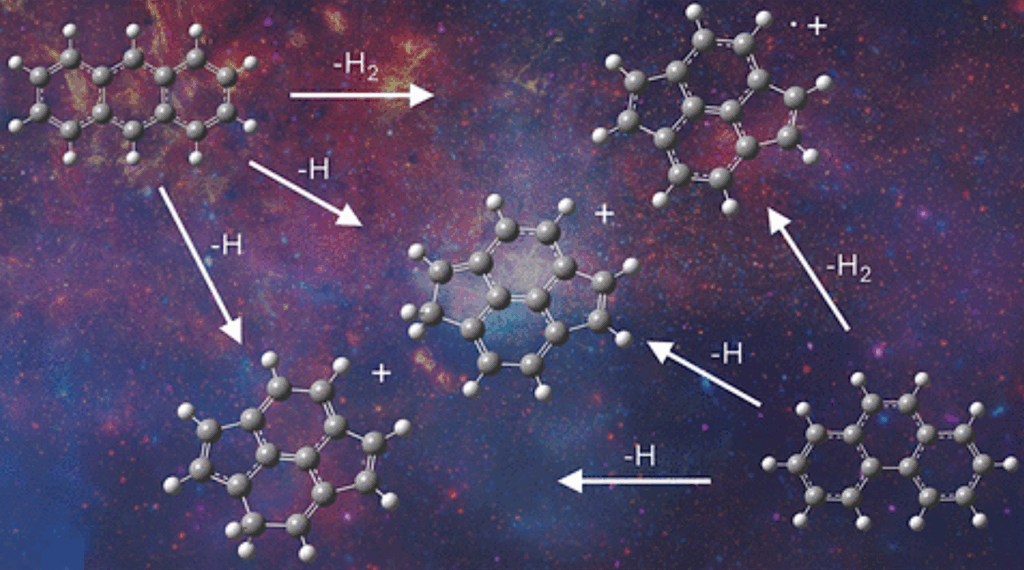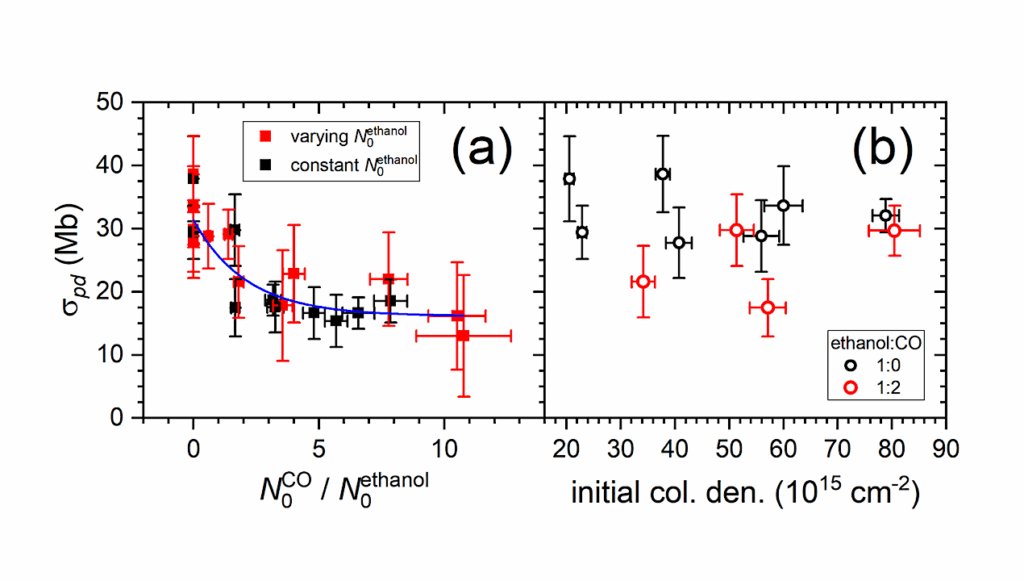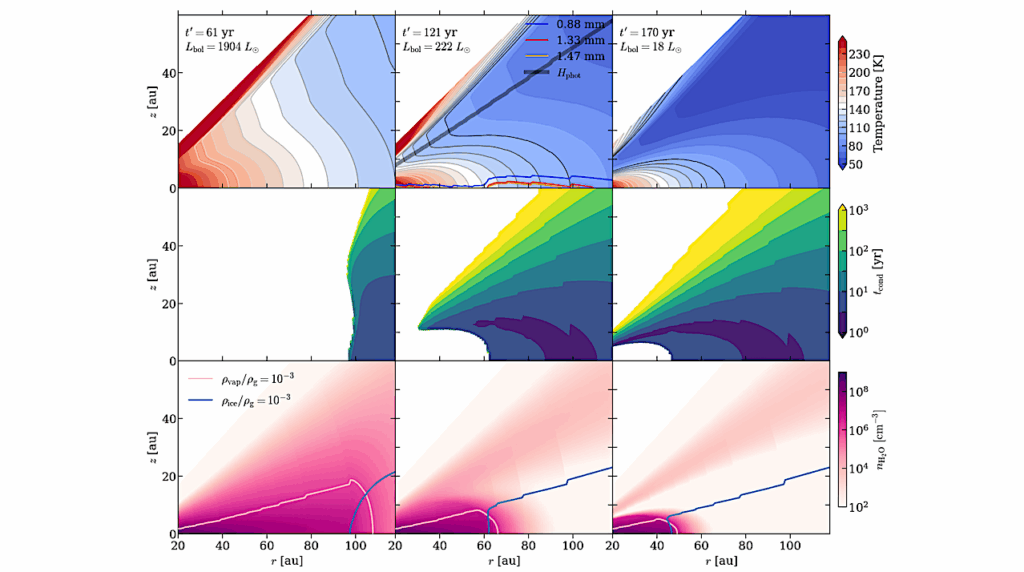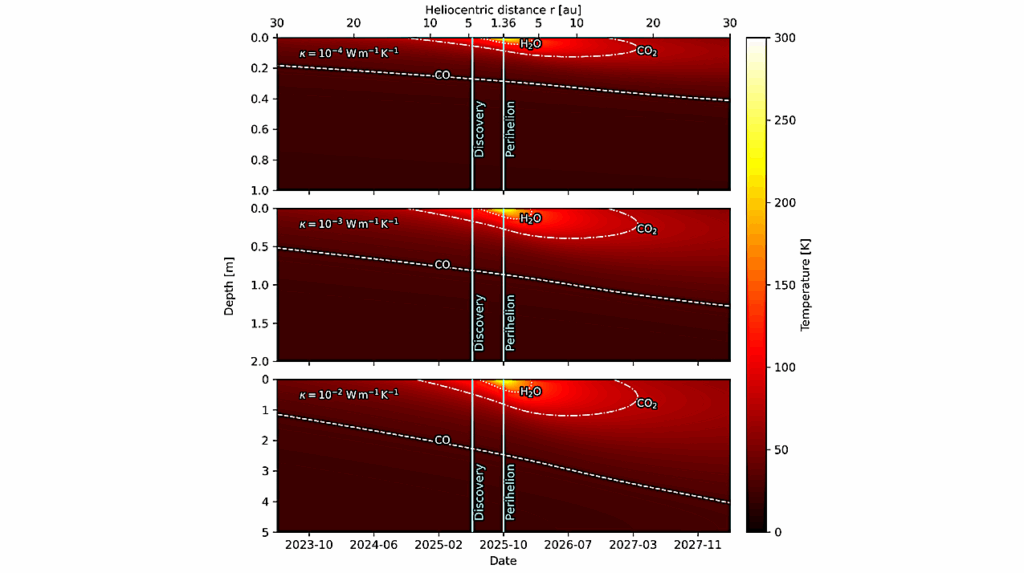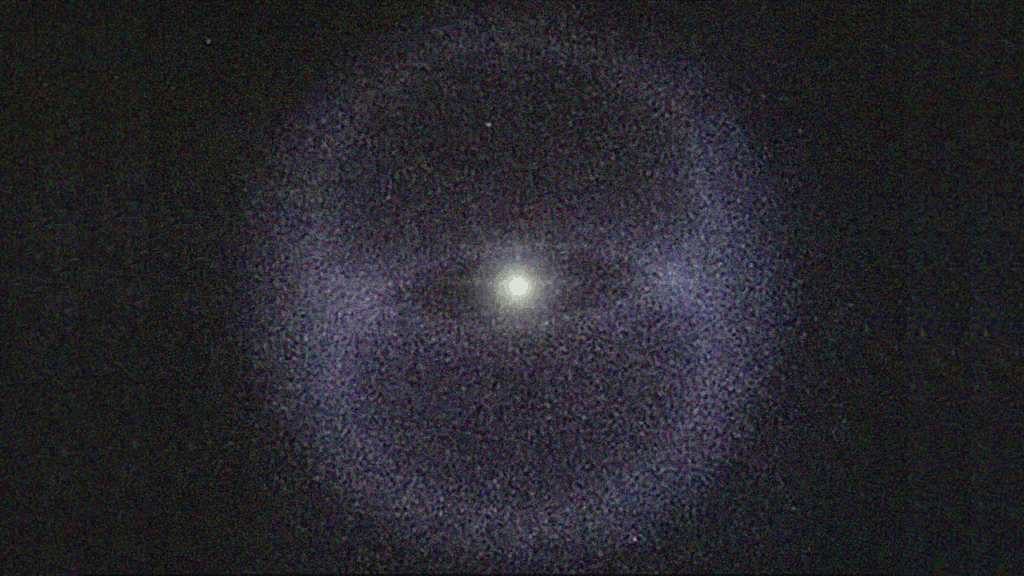Unraveling the Interface Chemistry Between HCN And Cosmic Silicates By The Interplay Of Infrared Spectroscopy And Quantum Chemical Modeling

Understanding the interaction between hydrogen cyanide (HCN) and silicate surfaces is crucial for elucidating the prebiotic processes occurring on interstellar grain cores, as well as in cometary and meteoritic matrices.
In this study, we characterized the adsorption features of HCN on crystalline forsterite (Mg2SiO4) surfaces, one of the most abundant cosmic silicates, by combining experimental infrared spectra at low temperatures (100-150 K) with periodic DFT simulations.
Results showed the coexistence of both molecular and dissociative HCN adsorption complexes as a function of the considered forsterite crystalline face. Molecular adsorptions dominate on the most stable surfaces, while dissociative adsorptions occur predominantly on surfaces of lower stability, catalyzed by the enhanced Lewis acid-base behavior of surface-exposed Mg2+-O2– ion pairs. On the whole set of adsorption cases, harmonic frequency calculations were carried out and compared with the experimental infrared bands.
To disentangle each vibrational mode contributing to the experimental broad bands, we run a best non-linear fit between the predicted set of frequencies and the experimental bands. The outcome of this procedure allowed us to: i) deconvolute the experimental IR spectrum by assigning computed normal modes of vibrations to the main features of each band; ii) reveal which crystal faces are responsible of the largest contribution to the adsorbate vibrational bands, giving information about the morphology of the samples.
The present straigthforward procedure is quite general and of broad interest in the fine characterization of the infrared spectra of adsorbates on complex inorganic material surfaces.
Niccolò Bancone, Rosangela Santalucia, Stefano Pantaleone, Piero Ugliengo, Lorenzo Mino, Albert Rimola, Marta Corno
Comments: 23 pages, 5 figures. The Journal of Physical Chemistry C (2024)
Subjects: Materials Science (cond-mat.mtrl-sci); Astrophysics of Galaxies (astro-ph.GA)
Cite as: arXiv:2409.08074 [cond-mat.mtrl-sci] (or arXiv:2409.08074v1 [cond-mat.mtrl-sci] for this version)
https://doi.org/10.48550/arXiv.2409.08074
Focus to learn more
Related DOI:
https://doi.org/10.1021/acs.jpcc.4c03454
Focus to learn more
Submission history
From: Niccolò Bancone M.Sc.
[v1] Thu, 12 Sep 2024 14:28:21 UTC (6,961 KB)
https://arxiv.org/abs/2409.08074
Astrobiology,



